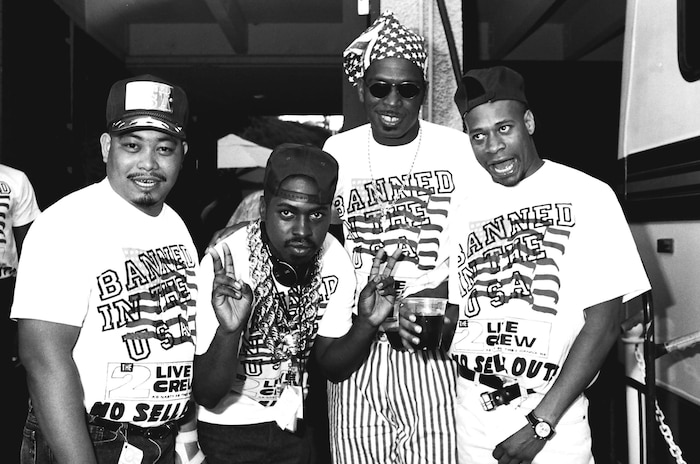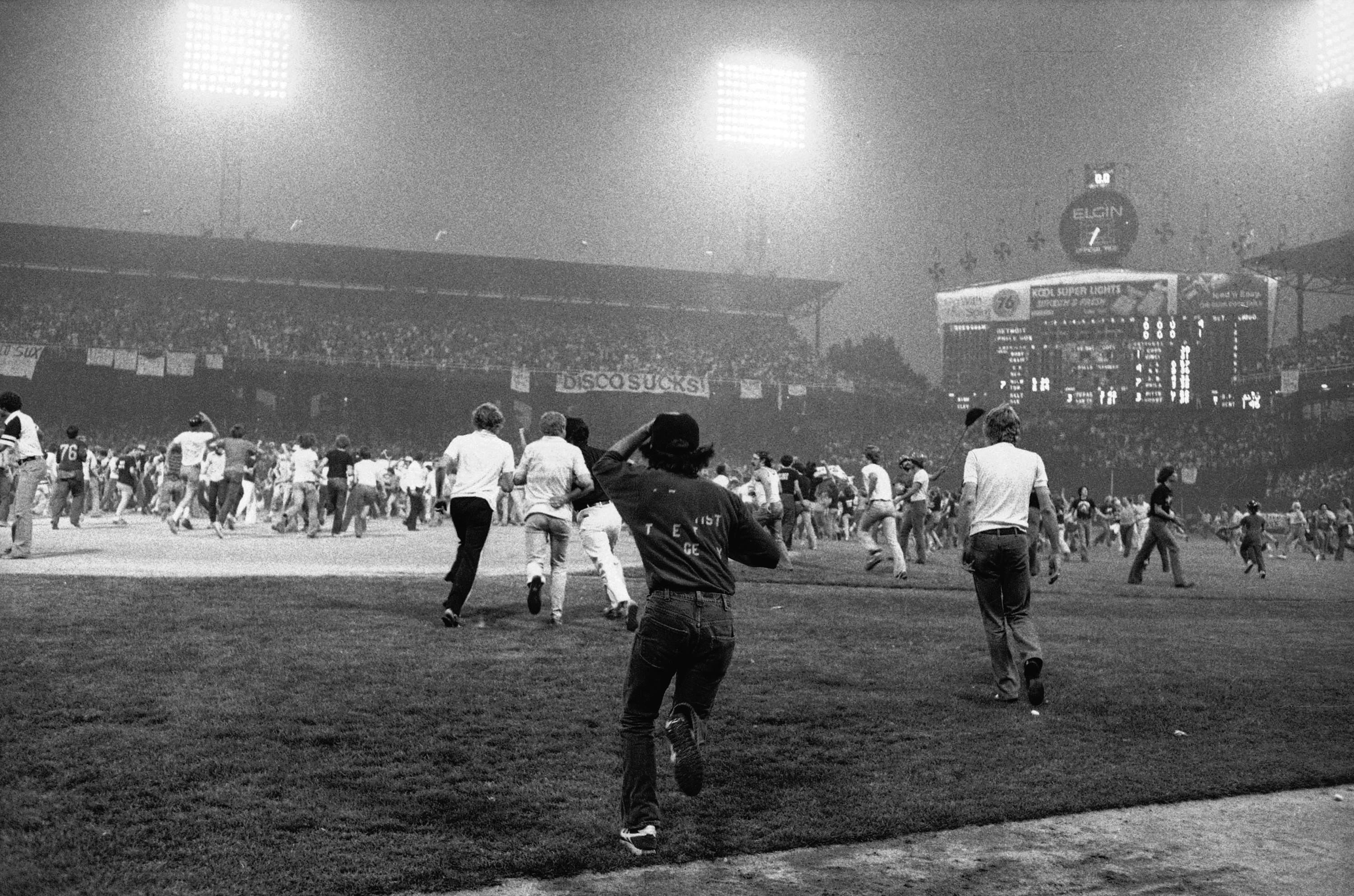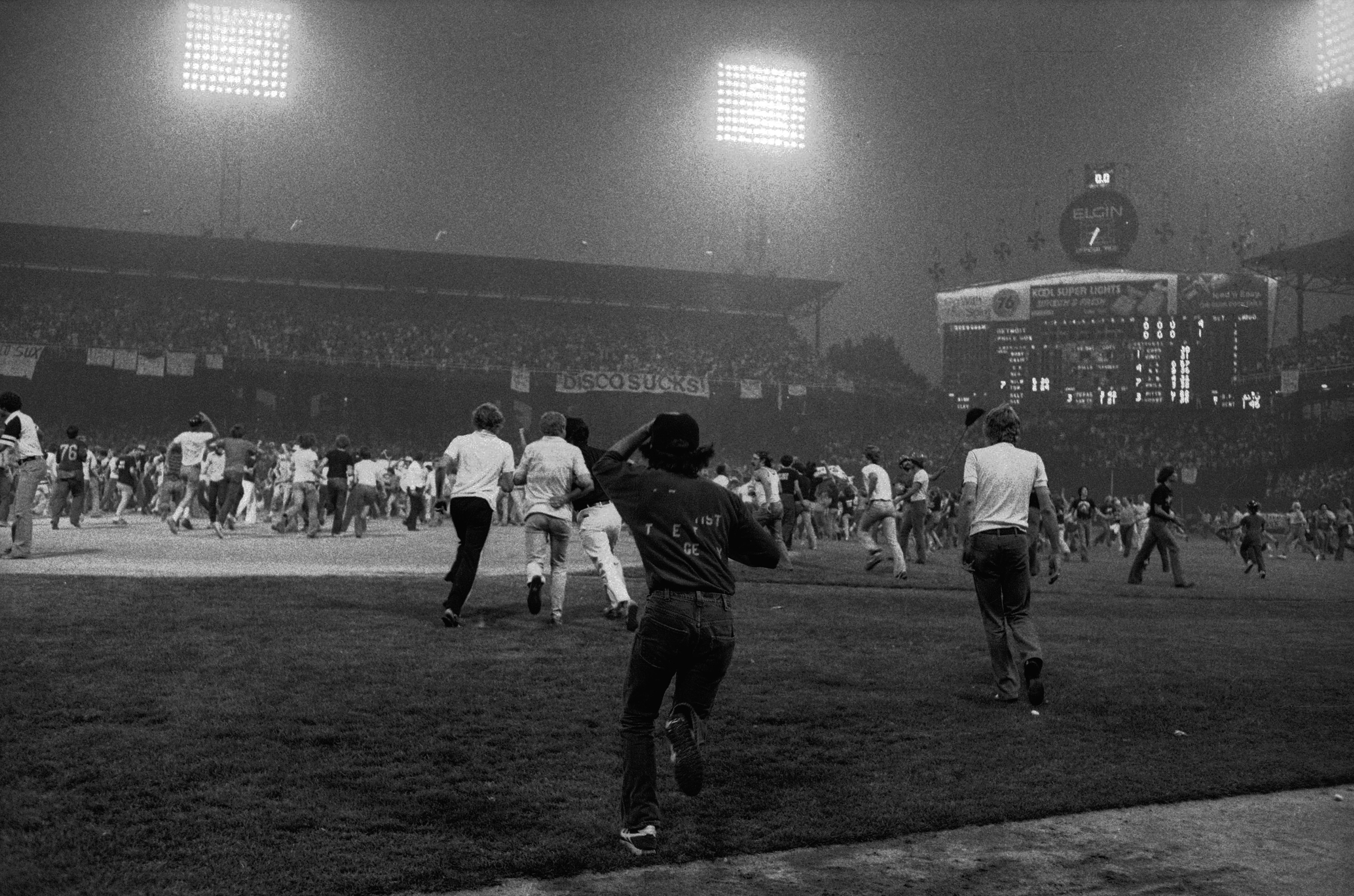Movements Against Music
Zach Schonfeld explains the various ways that authorities have tried to ban music through the ages

For every pop music phenomenon, there is an equal and opposite reaction. I think Isaac Newton said that. I could be wrong.
Popular music has long held the power to outrage, frighten and offend. At risk of presenting an oversimplified chronology, the phenomenon can be perceived in generational cycles. Members of the World War I generation scandalized their parents with the Jitterbug and dancing sinfully at jazz clubs, then recoiled as their own children shook their hips to early rock & roll. Baby boomers embraced free love and sex at Woodstock, then issued a moral panic over the rise of hip-hop. Even the late Prince is a great example of this: In the mid-’80s, his frank depiction of sex partly prompted a Senate hearing on obscenity in music. Yet just 30 years later, his untimely death prompted a statement of appreciation from the president of the United States.
Any major innovation in music, from ballroom jazz to Beyoncé, has had its critics. But sometimes criticism gives way to organized opposition and moralistic fervor. The anti-disco backlash of the late 1970s, peaking with 1979’s Disco Demolition Night, is perhaps the most bizarre anti-musical movement. But there have been many more musical opposition oddities throughout history.
The Riot of Spring (1913)
Back in 1913, Igor Stravinsky premiered his latest and most revolutionary ballet, The Rite of Spring, in Paris. Stravinsky had recently landed a hit with his previous 1911 ballet Petrushka, but his choreographer, Vaslav Nijinsky, had scandalized audiences earlier that same year with a raunchy interpretation of Debussy’s L’Après-midi d’un faune. Yet nothing could prepare them for the reaction Rite received.
Upon its premiere, the French playwright Jean Cocteau wrote that “innumerable shades of snobbery, super-snobbery and inverted snobbery were represented” in it. Precisely what happened next is disputed. What’s clear, though, is that the dissonance and avant-garde tenor of Stravinsky’s new work provoked some degree of chaos within its uber-elite audience, which prompted both physical violence and objects tossed towards the spectacle unfolding in front of them. According to some accounts, a riot ensued opening night and at least one person was challenged to a duel. One witness claimed at least 40 people were arrested. It’s also been reported that Stravinsky and Nijinsky took their final bows over the din of protesters.
So while we don’t know exactly what happened, we do know that The Rite of Spring shocked and offended. Its infamous title is now synonymous with “riot,” ushering in a century of music that has provoked listeners in one way or another. The Rite, in the words of historian Esteban Buch, was like “some kind of gate to modernism, to the 20th Century.”
Jazz Police (1920s-30s)
Jazz captivated Americans converged in speakeasies during the Prohibition era. But like any radical cultural movement, its chaotic energy and heavy improvisation frightened some. “It is not music at all,” declared Princeton professor Henry van Dyke. “It's merely an irritation of the nerves of hearing.” Even the New York Times bolstered the jazz-as-threat narrative by publishing an article claiming that a conductor’s deadly heart attack had been caused by jazz.
Still, the domestic backlash over jazz in America was muted compared to the reaction spawned by its spread abroad – especially in Ireland. In the poverty-stricken Ireland of the 1930s, the Catholic Church grew increasingly concerned with mounting sexual depravity and dancing among the youth. Thanks to the gramophone and other recording innovations, the Irish began listening to jazz, much to the dismay of cultural nationalists who saw the music as an affront to traditional Irish culture. The hysteria reached a fever pitch on New Year’s Day 1934, when several thousand people marched in an anti-jazz protest through the town of Mohill.
“The procession was accompanied by five bands and the demonstrators carried banners inscribed with slogans such as ‘Down with Jazz’ and ‘Out with Paganism,’” claims the Irish history site theirishstory.com. At the center of the movement were priest Peter Conefrey, who demanded that the government forbid jazz dancing, and Cardinal MacRory, who referred to such dances as “a fruitful source of scandal and of ruin, spiritual and temporal” that would bring “irreparable disgrace and life-long sorrow” to innocent girls.
Beatles vs. Jesus (1966)
John Lennon wasn’t lying: The Beatles really were bigger than Jesus. But stating this observation out loud, and especially during an era when pop stars didn’t routinely go on social media to make inflammatory and asinine proclamations, wasn’t Lennon’s greatest idea.
The comment came during a March 4, 1966 interview with Maureen Cleave of the London Evening Standard. “We’re more popular than Jesus now,” Lennon said, according to Cleave’s transcript. “I don’t know which will go first – rock & roll or Christianity. Jesus was all right but his disciples were thick and ordinary. It’s them twisting it that ruins it for me.”
Things remained relatively subdued until Datebook republished the interview in the US that summer, which then prompted a New York Times story about it in August. Cue religious fervor. A prominent Alabama DJ, WAQY’s Tommy Charles, stopped playing Beatles music and called the comment “sacrilegious.” In the Deep South – and in places as far away as South Africa and Mexico City – anti-Beatles bonfires, boycotts and protests raged. The group’s subsequent US tour was marred by outrage, not limited to a surprise appearance by the KKK.
Disco Demolition Night (1979)
Has any genre inspired a backlash as swift and bitter as the one against disco? Arguably not. As punk swept the clubs in the late 1970s, “Disco Sucks” t-shirts began appearing all over. Even Devo’s Mark Mothersbaugh joined the hate, likening disco to “a beautiful woman with a great body and no brains.” Everclear aptly captured the prevailing sentiment 20 years later on the band’s “AM Radio” with the line: “We like pop / We like soul / We like rock / But we never liked disco.”
The anti-disco movement reached its apex on July 12, 1979 – or, “the day disco died.” That was the night that shock jock radio DJ Steve Dahl brought Disco Demolition Night to a baseball showdown between the Chicago White Sox and the Detroit Tigers. Dahl’s feud with disco was personal: He’d been fired from a Chicago station when it switched over to an all-disco format, and at his subsequent job at WLUP he mocked disco on-air and popularized a parody of Rod Stewart’s “Do Ya Think I’m Sexy,” retitled “Do You Think I’m Disco.”
The ceremonious on-field detonation of disco records indeed brought music fans to the baseball field that night, though it succeeded well beyond its intentions. It ended in a massive riot that damaged the ball field and required police in full riot gear to disperse. The promotion was disastrous but chillingly effective. In his research on the disco backlash, historian Gillian Frank writes that it “triggered a nationwide expression of anger against disco that caused disco to recede quickly from the American cultural landscape.”
For the record industry, the news wasn’t good. Disco’s downfall precipitated a lull in record sales in the early 1980s that didn’t fully lift until Michael Jackson’s Thriller (and along with it, the MTV revolution) came along at the end of 1982.
Porn Wars (mid-’80s)
Tipper Gore was so horrified to catch her daughter grooving to Prince’s masturbation-happy “Darling Nikki” that she co-founded the Parents Music Resource Center (PMRC), a committee of “Washington Wives” whose primary aim was to save other parents from the horror of discovering their kids listening to songs with explicit lyrics. One goal was to lobby the music industry to establish a “guidelines and/or a rating system,” much like the film ratings system. But the efforts devolved into self-parody when in in 1985 the group distributed a list of 15 songs – the “Filthy Fifteen” – deemed particularly objectionable. The list included such innocuously adolescent fare as Cyndi Lauper’s “She Bop” and Twisted Sister’s “We’re Not Gonna Take It,” while scolding metal groups like Venom and Mercyful Fate (which hardly any teens were listening to in the first place) for their interest in occultism.
The anti-filth parade hit a fever pitch in the fall of 1985, when Dee Snider, Frank Zappa and John Denver appeared at a widely publicized Senate hearing to speak out against what they saw as encroaching censorship in music. In his comments, Zappa famously declared that the PMRC’s proposals were “the equivalent of treating dandruff by decapitation.” The rocker toured the talk show circuit and repurposed audio from the hearing into a sound collage called “Porn Wars.” The accompanying album, 1985’s Frank Zappa Meets the Mothers of Prevention, thumbed its nose at Gore’s group with its title and with the mock label that Zappa affixed to the album, reassuring listeners that his songs would not “cause eternal torment in the place where the guy with the horns and pointed stick conducts his business.” But the PMRC had the last laugh when the RIAA quietly agreed to start stickering explicit albums with warning labels. The black and white “PARENTAL ADVISORY” sticker became iconic by the mid-’90s.
Rap Rage (Late ’80s - Early ’90s)
In 1990, Newsweek put hip-hop on its cover with the blaring words “Rap Rage” above Tone Loc’s head. By the way it outwardly demonized rappers and dismissed the genre as “bombastic, self-aggrandizing and yet as scary as sudden footsteps in the dark,” Jerry Adler’s article was hardly nuanced. Adler derided music “so postindustrial it’s almost not even played” and summed it up as “the culture of American males frozen in various stages of adolescence.”
No wonder early hip-hop, with its aggressive beats and proudly black protest rhymes, enraged the (primarily white) gatekeepers of culture. As Kelefa Sanneh wrote in a 2007 New York Times article: “The story of hip-hop is partly the story of those who have been irritated, even horrified, by it.” But by the early ’90s, this irritation had blossomed into a full moral panic. First, the FBI went after N.W.A. The Bush administration spoke out against “Cop Killer” (more on that below). 2 Live Crew became mired in a protracted legal battle over obscenity laws, to the point where an Alabama record store clerk was actually cited for simply selling a copy of the group’s album in 1988.
Killing “Cop Killer” (1992)
Though the year 1992 marked an early commercial peak for hip-hop – Ice Cube’s The Predator, Dr. Dre’s The Chronic and the Beastie Boys’ Check Your Head all ruled the charts – Ice-T left gangsta rap behind for his metal group Body Count. Despite releasing five albums over the course of 22 years, the band is best remembered for one infamous 1992 track: “Cop Killer.” As its title implies, it’s not a subtle song. Over thrashing guitars, gunshots and a steady chant of “Fuck the police,” Ice expresses his interest in avenging the then-recent beating of Rodney King in Los Angeles: “Die, die, die! / Pig, die!”
To say Body Count’s “Cop Killer” was controversial would be like saying Donald Trump is talkative – it was an absurd understatement that scarcely approaches the reality of the situation. “Cop Killer” outraged mass audiences with its first-person account of avenging police brutality with a black ski mask and a “long-assed knife.” The song was denounced by then-President George H. W. Bush, brought death threats upon Body Count’s record label and prompted several law enforcement groups to demand that Warner Bros. withdraw Body Count’s self-titled album. (The Combined Law Enforcement Associations of Texas went further, advocating a boycott of all Warner-related products.) Eventually, Ice-T gave into the outrage and re-released the album without “Cop Killer” on it.
The Post-9/11 Music Memorandum (2001)
The September 11 attacks inspired plenty of somber music in the early 2000s (Bon Jovi’s “Undivided,” Bruce Springsteen’s album The Rising). But they also prompted new and often arbitrary standards of sensitivity in the music industry. In the wake of terror, the national appetite for entertainment seemed more fragile than ever. This frequently took the form of concerns about album art and packaging: Jimmy Eat World hastily re-released 2001’s presciently titled Bleed American as Jimmy Eat World, The Strokes dropped “New York City Cops” from Is This It’s tracklist, and 30 Seconds to Mars wisely reconsidered an album cover depicting a pilot being ejected from an exploding plane.
Clear Channel, the corporate radio broadcasting giant, took things further. Long before the rubble had been cleared at Ground Zero, the company distributed what became known as the 2001 Clear Channel memorandum, a list of 165 “lyrically questionable” songs that radio stations were advised (though not required) to avoid. The list singled out some understandable picks, like Soundgarden’s “Blow Up the Outside World.” It also included completely inexplicable selections, ranging from Cat Stevens’ “Peace Train” to the Beatles’ “Ob-La-Di, Ob-La-Da” (Rage Against the Machine’s entire anti-establishment catalogue was off-limits, too).
Some people, like Peter Asher (of Peter and Gordon) were surprised to see their songs on the list. “"I suppose a song... could be upsetting if someone took it literally,” Asher told the New York Times of his song “I Go to Pieces,” which made the list. But “it's a totally pro-love sentiment and could only be helpful right now.”
The Anti-Bey Hive (2016)
It’s not clear whether the great Beyoncé backlash of early 2016 qualifies as a “movement” or if it’s just a handful of blowhards spitting vitriol online. Either way, the strange scuffle occupied headlines and popular attention for a brief moment in early February before fizzling out in a blaze of Bey love. Then, Piers Morgan brought it back again after the surprise release of her visual album Lemonade.
The controversy first started with “Formation,” the politically charged anthem Beyoncé surprise-released on the eve of her Super Bowl 50 performance. The music video contained overt references to police brutality, including the graffitied words “Stop shooting us.” Like “Cop Killer” two decades earlier, this rankled law enforcement groups. But unlike “Cop Killer,” “Formation” in no way actually encouraged violence against police.
No matter. Police agencies boycotted Bey, calling her music decidedly “anti-police.” Some cops refused to watch her Super Bowl performance. Former NYC mayor Rudy Giuliani blasted her for using her platform to “attack police officers.” And the whole thing climaxed and just as quickly fizzled with an “anti-Beyoncé rally” outside of the NFL building when only two Beyoncé haters showed up.

